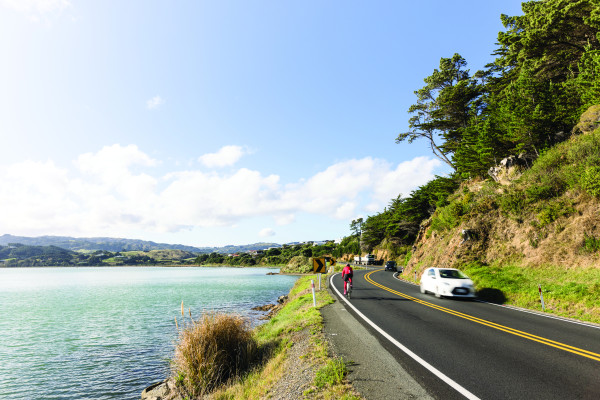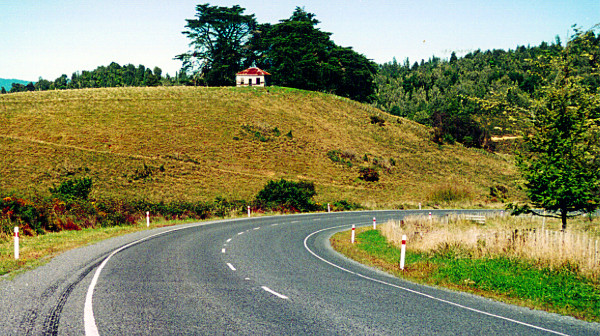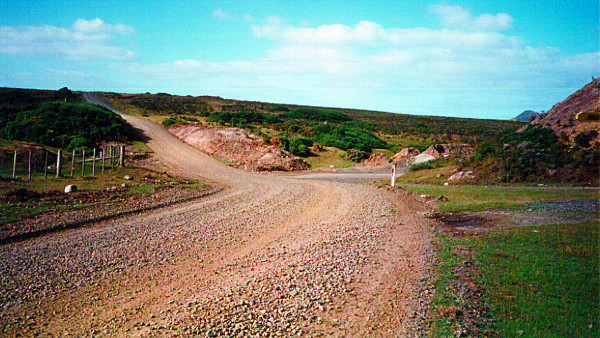There are 3 main types of surface used on our roads and highways:
You should be alert for changes in the road surface. You may need to adjust your driving to suit the particular surface you’re driving on, as different types of surfaces can affect your vehicle’s handling.
Asphalt, also called bitumen, has a smooth, black appearance and produces a low level of road noise when you drive over it. It’s often used on busy roads and curves because it stands up well to wear caused by braking vehicles.
Asphalt provides good overall grip, but has reduced skid resistance when it’s wet. This means you should slow down and take extra care when driving on asphalt in wet weather.

Asphalt
Chip-seal is a thin layer of stones set in tar. It has a rough appearance when in good condition, but may wear smooth with age and frequent use.
Worn chip-seal has reduced skid resistance, so be alert for smooth patches as you drive.
Slow down on newly laid chip-seal. There may be patches of loose chips, which can increase your risk of skidding.

Chip-seal
Unsealed roads can be clay, pumice or gravel, sometimes called loose metal.
Because the surface of the road is loose, it can move under your wheels and offers very low skid resistance. Loose stones can be thrown up and chip or break a windscreen. Take extra care on gravel roads and adjust your speed to suit the conditions.
Take extra care in dry weather, as your visibility may be reduced by dust thrown up by any vehicles in front of you. Always increase your following distance to stay back from the dust cloud.

Gravel